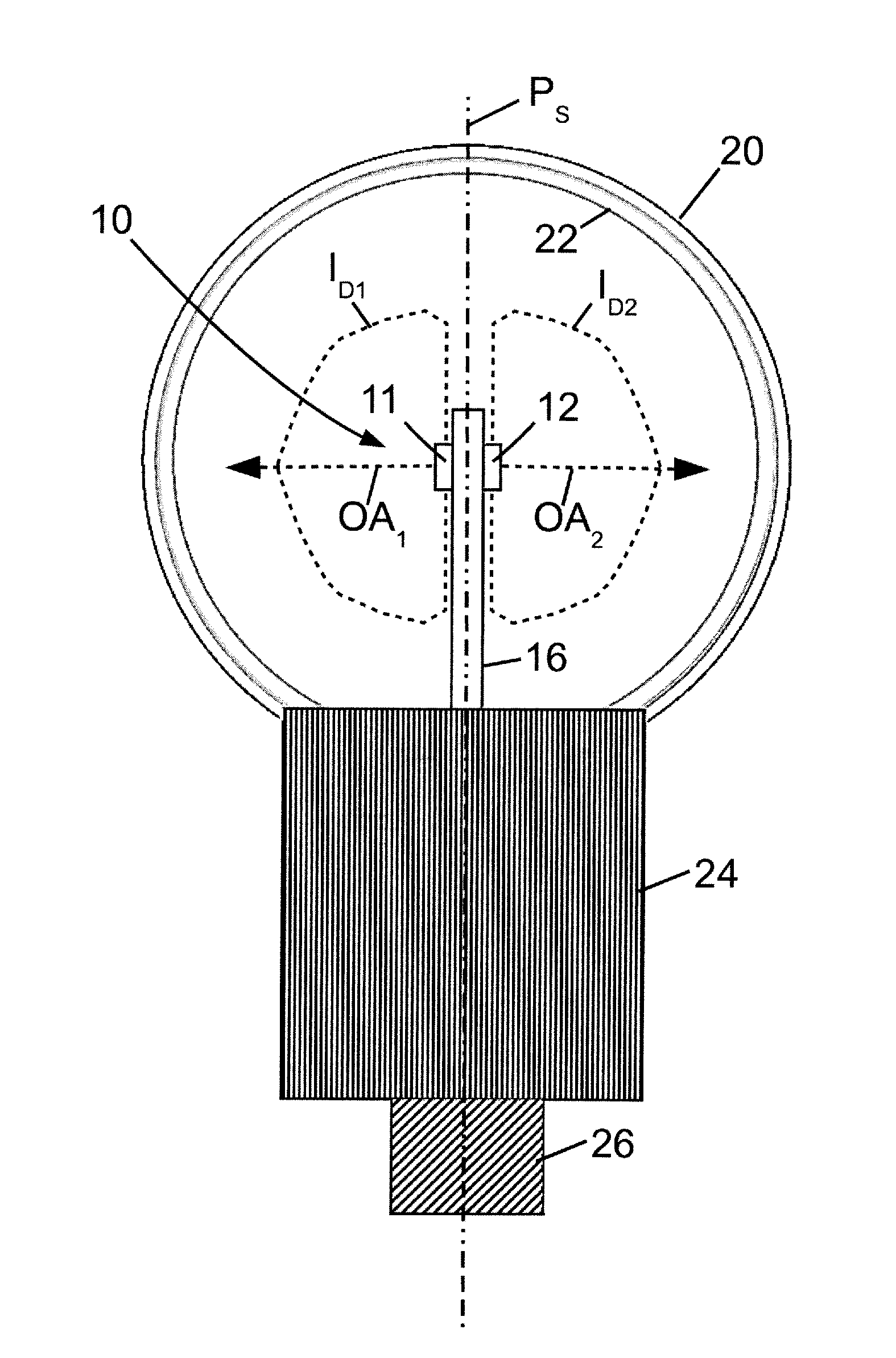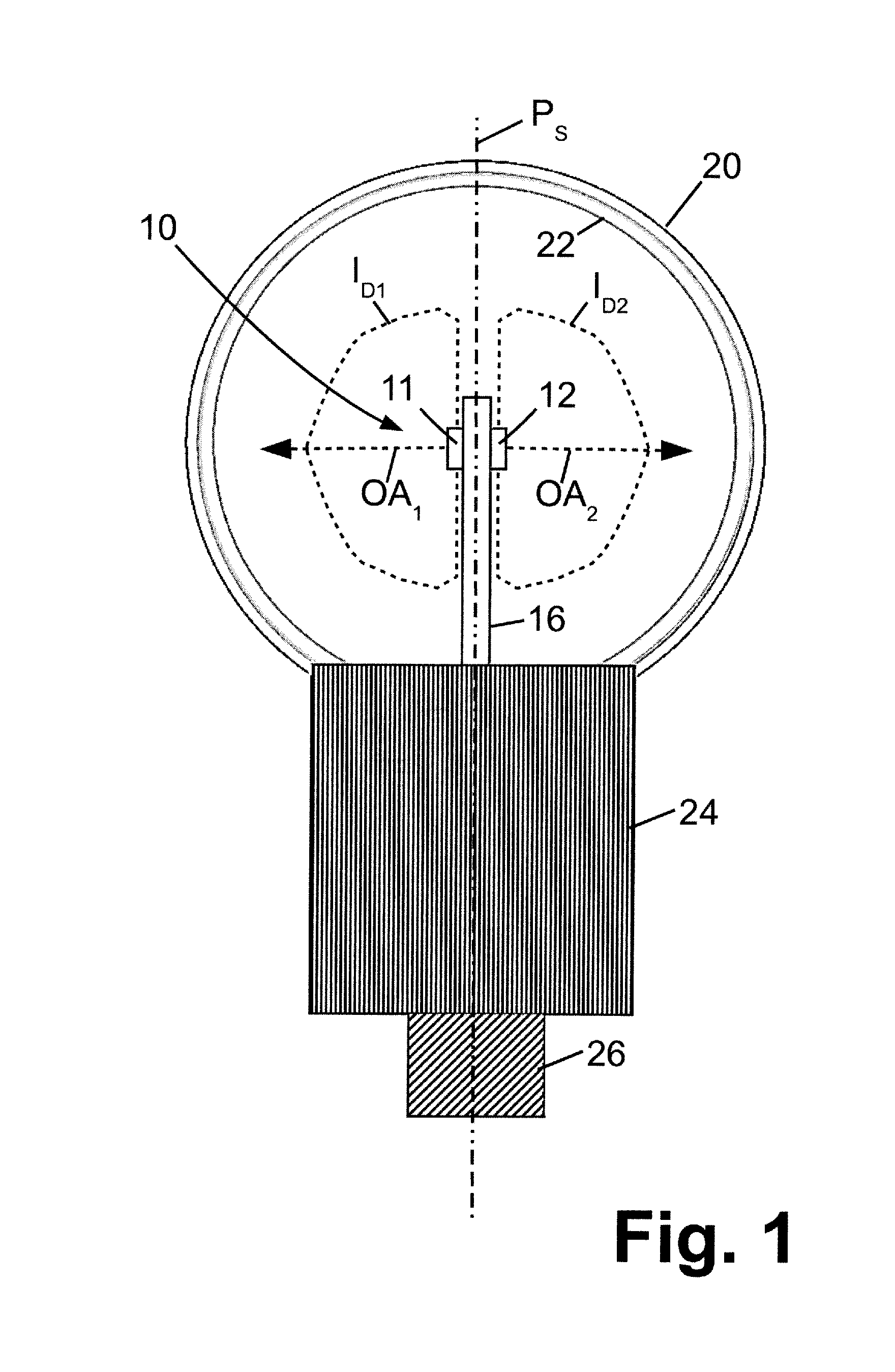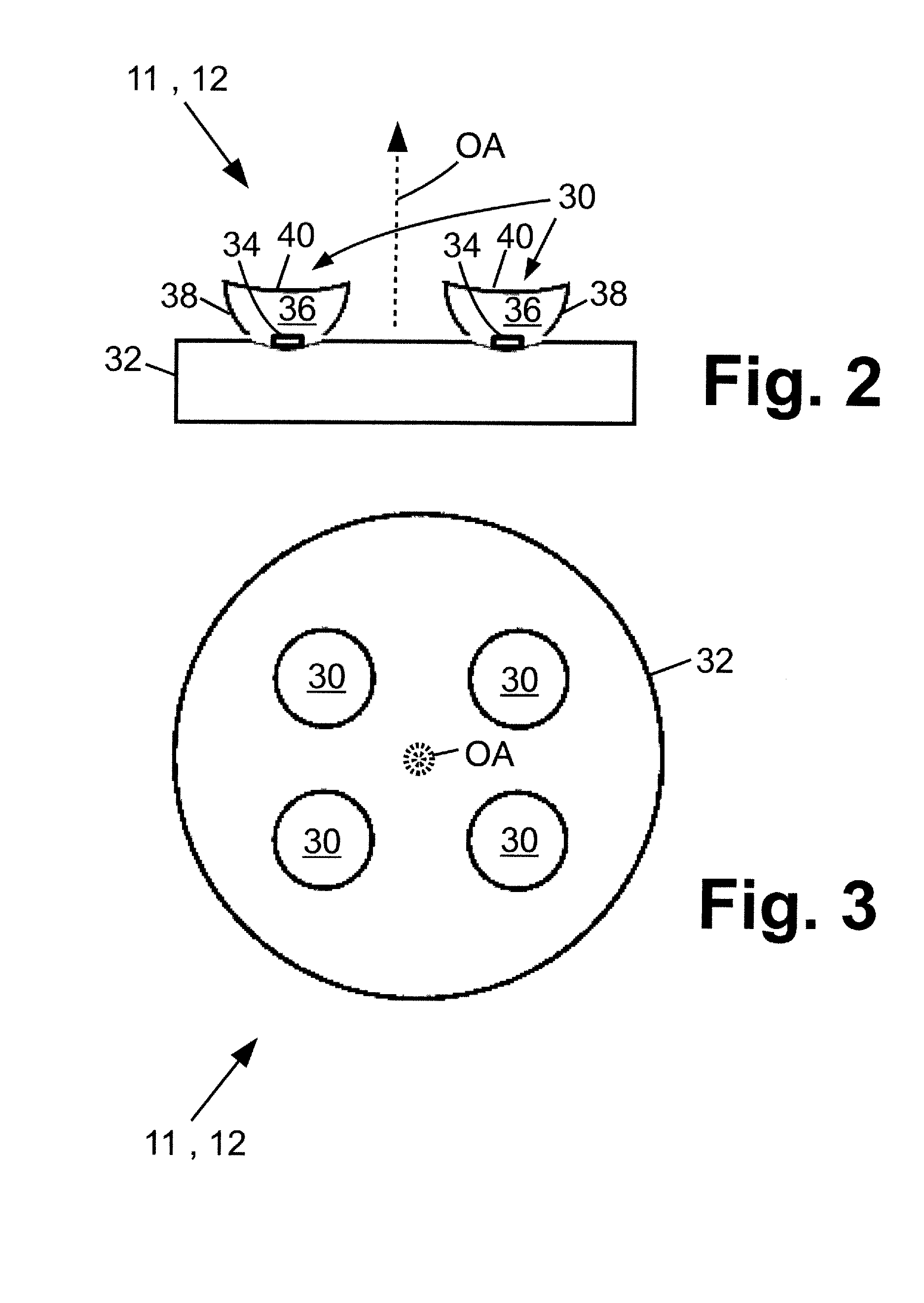Omnidirectional LED based solid state lamp
a solid-state lamp and led-based technology, applied in the field of illumination arts, lighting arts, solid-state lighting arts, can solve the problems of increased cost, complicated manufacturing, and certain devices
- Summary
- Abstract
- Description
- Claims
- Application Information
AI Technical Summary
Benefits of technology
Problems solved by technology
Method used
Image
Examples
Embodiment Construction
[0016]With reference to FIG. 1, a lamp or other lighting apparatus includes a light engine 10 comprising a first light emitting diode (LED) device or LED device array 11 and a second, oppositely facing LED device or LED device array 12. The light engine 10 is mounted on the end of a post 16 and is surrounded by an envelope 20 including a phosphor 22 that is effective to convert light emitted by the light engine 10 to emission light. In some embodiments, the light engine 10 emits blue, violet, or ultraviolet light and the phosphor 22 converts the blue, violet, or ultraviolet light emitted by the light engine 10 to white emission light. In some embodiments, a portion of the light emitted by the light engine 10 passes through the phosphor 22 to contribute to the emission light. For example, the light engine 10 may emit blue or violet light, the phosphor 22 may be tuned to emit warm white light (that is, white light with a spectrum that is biased toward the red end), and a portion of th...
PUM
| Property | Measurement | Unit |
|---|---|---|
| emission angles | aaaaa | aaaaa |
| symmetry | aaaaa | aaaaa |
| angle | aaaaa | aaaaa |
Abstract
Description
Claims
Application Information
 Login to View More
Login to View More - R&D
- Intellectual Property
- Life Sciences
- Materials
- Tech Scout
- Unparalleled Data Quality
- Higher Quality Content
- 60% Fewer Hallucinations
Browse by: Latest US Patents, China's latest patents, Technical Efficacy Thesaurus, Application Domain, Technology Topic, Popular Technical Reports.
© 2025 PatSnap. All rights reserved.Legal|Privacy policy|Modern Slavery Act Transparency Statement|Sitemap|About US| Contact US: help@patsnap.com



